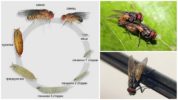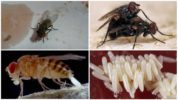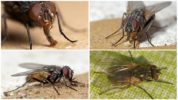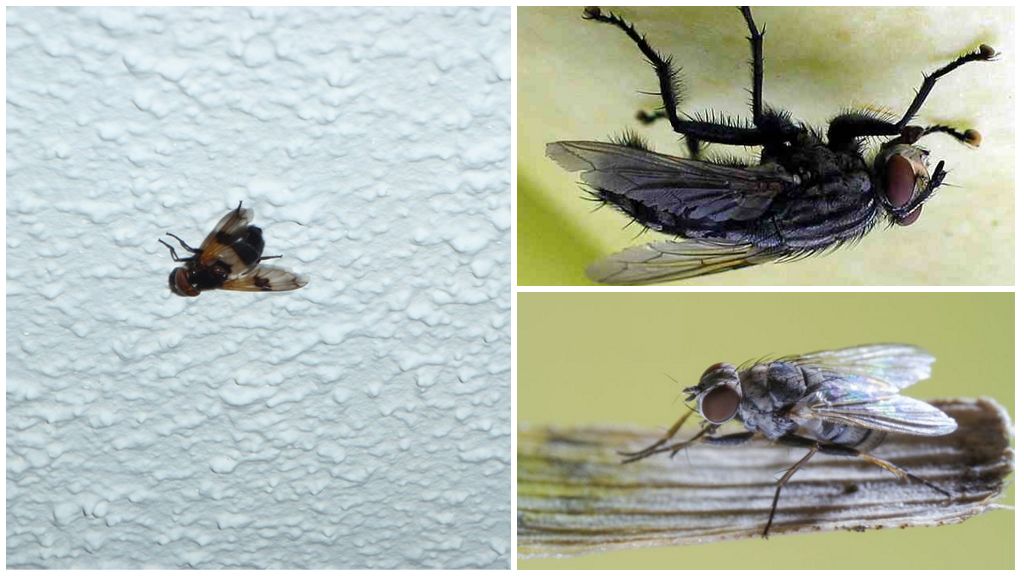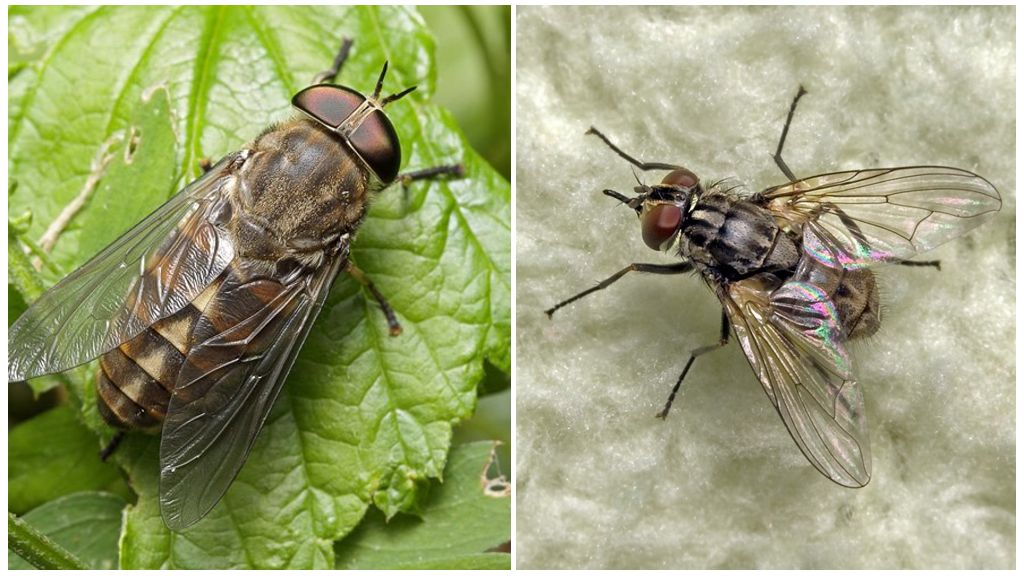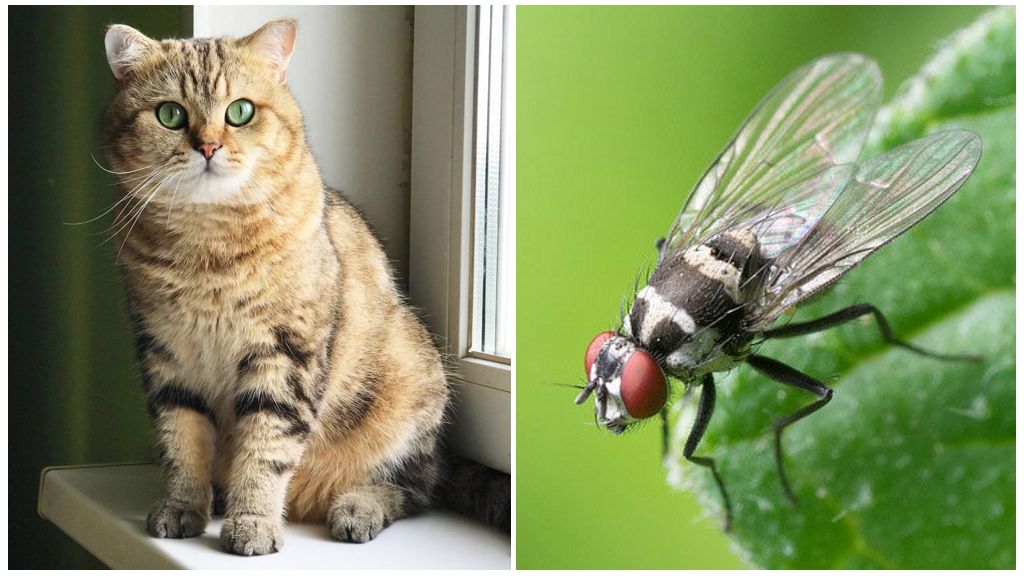- Life cycle of an ordinary fly
- The life of a fly
- Common fly
How many flies live depends on weather conditions, habitat, season. In the world there are about 5 thousand. varieties of flies. They differ in size, lifestyle, nutrition. On the territory of our country is ubiquitous common housefly, home or apartment. At the end of summer, a fly-fly appears in a person’s house. On the street, a meat or cadaver fly is often found.
Description of appearance
All flies are similar to each other. morphological features.
- The body is oblong, densely covered with villi. A fly consists of a head, chest, abdomen. There are transparent wings on the back, antennae on the head. 6 pairs of limbs that allow the insect to be held on any surface in a horizontal, vertical position.
- The head is small, most of it faceted eyes. Behind them are three simple eyes. From the lower jaw departs the oral apparatus - the proboscis. In blood-sucking flies, it is prickly, cutting-sucking. For everyone else, it only gives you the opportunity to lick food.
- The limb is five-segmented, on the last segment are located the organs of smell, touch. A pawed fly analyzes the quality of food better than a human tongue. Fat glands on the legs allow the fly to stay on smooth surfaces and the ceiling.
- The wings are transparent, only two pairs, which distinguishes flies from other insects.
- The body colors are different - gray, green, blue, spotty, black. For a domestic pest, a gray color is characteristic.
Most oviparous speciesbut there are viviparous. The eggs are small, oval in heaps. Larvae are off-white or yellowish. They have the shape of a worm. Three stages of development pass, in the last phase of life they pupate. Dolly of dark color.
Life cycle
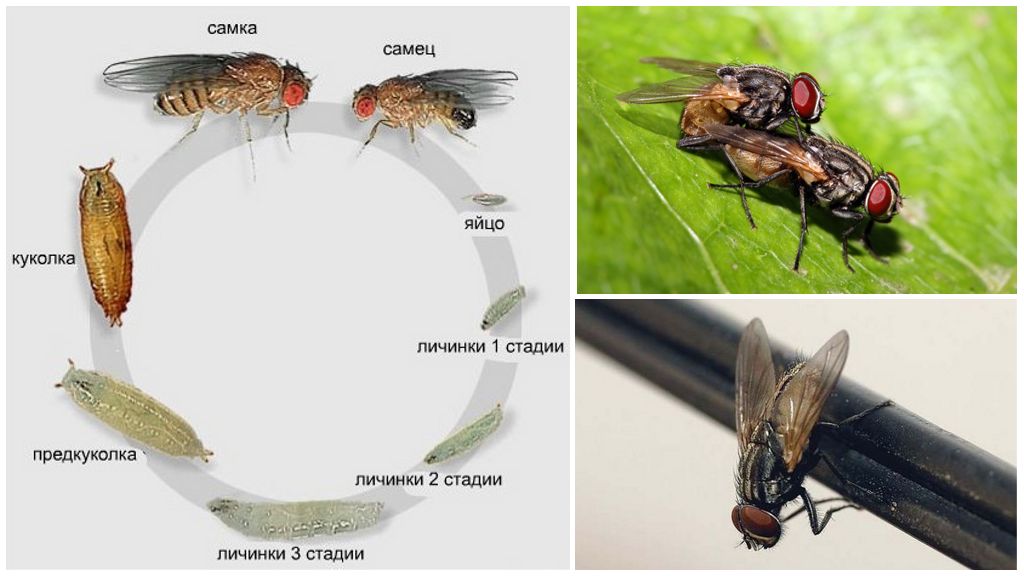
How long an ordinary fly lives depends on the conditions. Unfavorable climatic conditions, enemies, and poison shorten the term. The life cycle of a fly at the developmental stage has been studied very well. The insect becomes active with the onset of heat. The first warm rays of the sun make them get out of the shelters. They belong to daytime creatures; they prefer to “sleep” in the dark.
The development cycle of a fly begins with an egg. Formed inside the female after fertilization. Some species are viviparous. Reproduce into the light of larvae of the first age, which accelerates the development of insects by several days. Under favorable conditions, worms emerge from the eggs within 24 hours.
Larvae are also worms, maggots, go through 3 stages of development, but do not fade, they simply increase in size from 1 mm to 15 mm. The development of a fly at this stage takes about 10 days. The female lays larvae or eggs in groups; in one clutch it can reproduce about 200 eggs. Over the course of its short life, it puts aside 20 thousand pieces.
Maggots feed on decaying organic matter. They live in feces, slops, pus, rotting plants, meat, and corpses. At the end of development, pupate. Larvae of most species burrow into the soil. Pupa of a fly motionless, dark color, oval in shape. An adult fly comes to the surface in 1-3 days. How many days the whole life cycle lasts from an egg to an adult - about 20 days.
On a note!
The developmental stages of some species of flies may vary.Pupae often winter, continue development in the spring. Some larvae do not have time to go through the entire development life cycle, continue after wintering.
Vital activity of adults

The life of a fly after birth begins with fertilization. The main task of the female is to lay eggs, she does this with regular frequency. In some species of this family, the female lives without food; there are still enough energy reserves that the insect received as a larva.
Among the flies there are wildlife inhabitants, synanthropic species that live in close proximity to humans. Distinguish between settlement, semi-settlement, pasture. The latter are attached to livestock, larvae develop in the litter, feces or on the body of the animal.
Where village or city flies live - in a person’s house, apartment. They eat leftover food, crumbs, waste in the trash can, as well as sweat particles. By the end of summer in a human house appears fly flythat hides from the night cold. This insect feeds on blood, so a person often feels painful bites on himself.
On a note!
Semi-settlement flies include meat, cadaver. These insects are different large sizesshiny body with overflow of blue, green. Power source decaying meat, vegetables, feces, manure. From time to time they can fly into a person’s house, which is very undesirable. Meat flies are carriers of many diseases. The most common of these are intestinal infections, the most dangerous is leprosy.
Fly life span
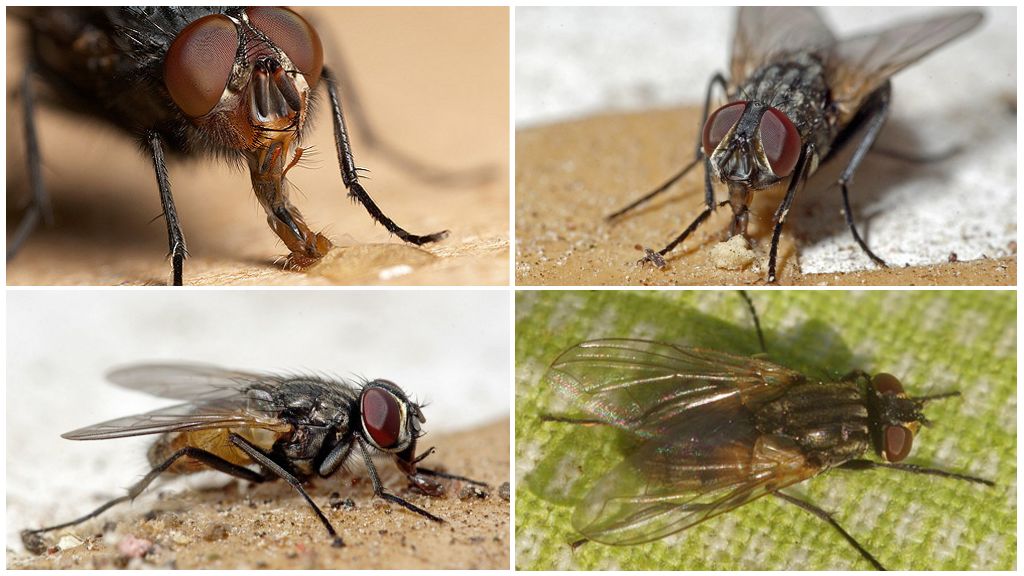
Theoretically, an insect in the adult stage lives no more than 2 weeks. The life span of a fly is reduced due to the presence of natural enemies. How many flies live in an apartment depends on human activity.
If the insects are not disturbed, they are in no hurry to die, they will safely live a happy life for 2 months. In the wild, some members of the family live only 14 days. Using all kinds of traps insect life is rapidly shrinking. Pests from the poison, which a person often uses in the form of an aerosol, spray, solution, begin to die instantly.
The life span of flies may increase if wintering is ahead. Insects die or fall asleep, depending on the ingenuity of adults. Their task is to find a safe place for wintering. Where flies winter: in crevices of walls, window openings, basements, any secluded places with a cool temperature. Otherwise, the insect dies under the influence of cold. Egg laying in the winter is stopped.
At the end of September flies become slow, fly a little. They are easy to slap hands, which previously could not be done. Life processes are slowing down. In a secluded place, the insect stops moving, which allows it to successfully winter.
It remains in this state until mid-April. With the onset of warm days, he wakes up, starts an active life. In a warm, cozy apartment, a fly may wake up ahead of time. Then she is destined to either die or fall asleep again.
